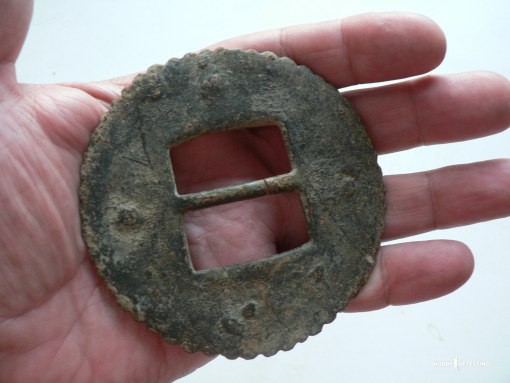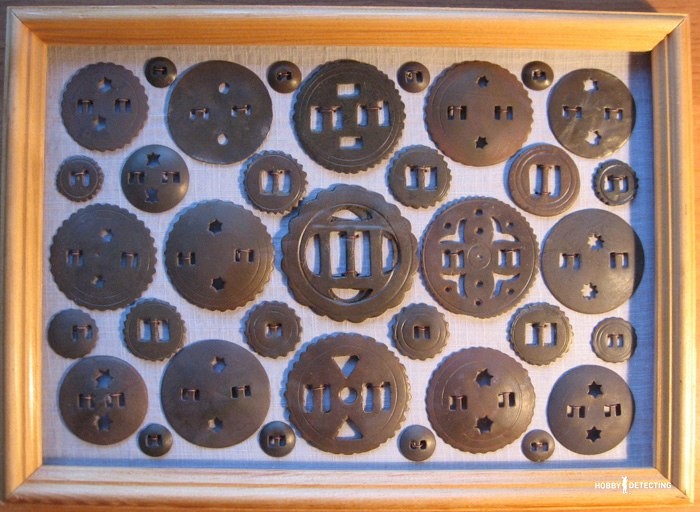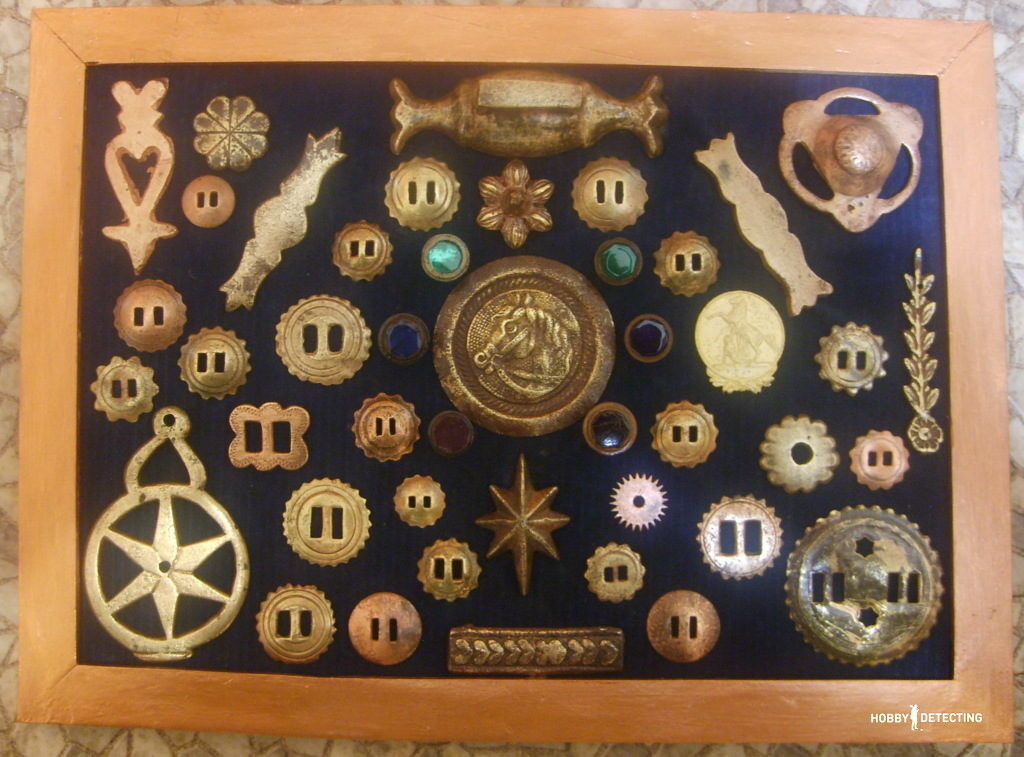Finding horse meat (Identification of finds, photo+)
Buttons from Gulliver's fly – this is what not very experienced treasure hunters sometimes call these finds and, of course, they are mistaken.
 What you see is nothing more than parts of a horse harness or, in the simple language of diggers, “horse meat.” Such decorations were an invariable attribute of every peasant farm in the distant and not so distant past, and today they are a fairly common find in the fields where our ancestors once plowed and sowed.
What you see is nothing more than parts of a horse harness or, in the simple language of diggers, “horse meat.” Such decorations were an invariable attribute of every peasant farm in the distant and not so distant past, and today they are a fairly common find in the fields where our ancestors once plowed and sowed.
 These decorations were made by local blacksmiths from copper or brass using approximately the same patterns, so “horse meat” is very easy to identify by its characteristic shape and ornaments, regardless of what part of the vast Russian Empire it was found in. Sometimes you come across quite large samples, and this is no longer “horse meat”, but rather “elephant meat”.
These decorations were made by local blacksmiths from copper or brass using approximately the same patterns, so “horse meat” is very easy to identify by its characteristic shape and ornaments, regardless of what part of the vast Russian Empire it was found in. Sometimes you come across quite large samples, and this is no longer “horse meat”, but rather “elephant meat”.
 More ancient parts of the harness were cast, but from about the middle of the 19th century. they began to be churned out en masse. By the way, these metal plaques, attached to the belts, not only served as a harness, but also served as a kind of amulet for the horse, a kind of relic of the past from distant pagan times.
More ancient parts of the harness were cast, but from about the middle of the 19th century. they began to be churned out en masse. By the way, these metal plaques, attached to the belts, not only served as a harness, but also served as a kind of amulet for the horse, a kind of relic of the past from distant pagan times.
 The rarest and most valuable finds are bells or bells, which sometimes bear the names of the craftsmen who made them.
The rarest and most valuable finds are bells or bells, which sometimes bear the names of the craftsmen who made them.
 In general, horse jewelry comes across quite often and is not of great interest to a treasure hunter, although some lovers of horse meat create beautiful compositions and panels from it that are pleasantly pleasing to the eye.
In general, horse jewelry comes across quite often and is not of great interest to a treasure hunter, although some lovers of horse meat create beautiful compositions and panels from it that are pleasantly pleasing to the eye.
Did you find horse meat? Have you made beautiful panels with her? Send a photo!
We publish everything according to the definition of finds here .
